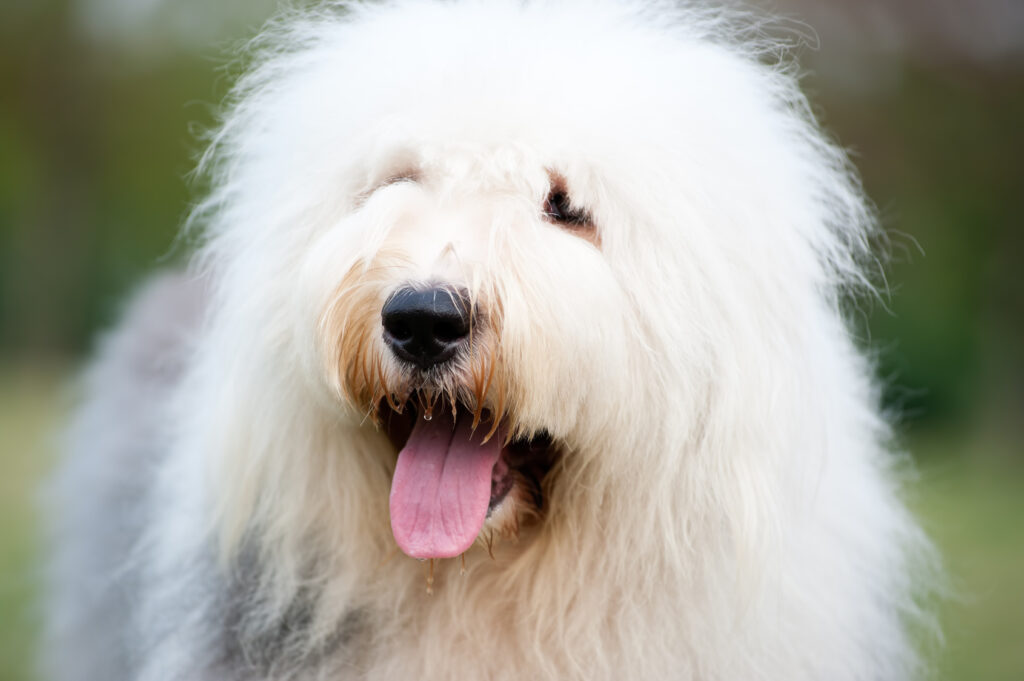Genetics: Cerebellar Degeneration in Old English Sheepdogs
Cerebellar Degeneration, also known as Cerebellar Abiotrophy, was first described in the Old English Sheepdog as an autosomal recessive inherited disorder in 2000. Cerebellar degeneration is now considered a form of Hereditary Ataxia.
Old English Sheepdog CA Genetic Testing Price: $48.00 per dog, or $38.00 per puppy for two or more puppies of the same litter

This neurodegenerative condition is associated with gradual death of neurons in the cerebellum. It causes a progressive loss of coordination resulting in the hallmark ataxic gait characterized by dramatic overstepping, particularly obvious in the forelimbs. As signs progress, dogs develop an intention tremor of their head and an obvious sway to their trunk as they walk. Onset of signs ranges from 6 months to 4 years of age and disease progression varies between dogs, but tends to be slow, occurring over several years and ultimately results in an inability to walk without falling and difficulty in eating and drinking.
Our team identified the mutation that is associated with this disease in a gene called Rab24. This gene encodes a protein that plays a role in autophagy, a process by which cells dispose of their waste. We also found that the same mutation causes the same condition in Gordon Setters, suggesting that it dates back to a time when the breeds had a common ancestor. It is a recessive condition, and so dogs that have only 1 copy of the gene do not develop clinical signs. Thus far, to the best of our knowledge, 100% of dogs with 2 copies of the gene have developed clinical signs.
Once you run the DNA test we will send you results that state your dog’s results are either:
- Negative – This means that your dog does not have the genetic mutation for Cerebellar Degeneration in Old English Sheepdogs and cannot pass it on to their puppies.
- Positive Heterozygous – This means that your dog has 1 copy of the genetic mutation and 1 copy of a normal gene. Since this is a recessive disease dogs with 1 mutation do not develop the clinical signs but is considered a carrier of the trait. If your dog has signs of cerebellar disease, it is likely due to another cause.
Breeding recommendations: If the dog has many other positive traits it may be reasonable to consider breeding these dogs to a Negative dog, screening the puppies and trying to select a Negative puppy to keep as a replacement breeding animal in the next litter or so. Over time this will gradually reduce the prevalence of the disease in the breed. We do not recommend breeding a positive heterozygous dog to a positive heterozygous dog since this could produce homozygous dogs which will develop this disease. - Positive Homozygous– This means that your dog has 2 copies of the genetic mutation and can be diagnosed with this disease if it is showing signs.
Breeding recommendations: your dog has a 100% chance of passing the mutation on to all of its puppies. We would not recommend using these dogs for breeding purposes if possible.